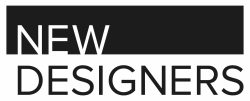FEMALE EMPOWERMENT THROUGH DESIGN
Wednesday’s are for the girls!
Today we are looking to the freshest designers who are inspired by the female form, representing diversity and utilising design to bring about important conversations around woman and women’s health.
Discover the rising stars of the future as they share their innovative designs through this trending topic.






BETH NOTMAN
BA (Hons) Design for Textiles, Heriot-Watt University

GRACE FAREY
BA (Hons) Graphic Design, Nottingham Trent University
This designer decided to create a period product brand called ‘Bleedin Hell’.
From research and observation, this designer saw many supermarkets supplied period brands that looked very similar. The names such as ‘Always’ and ‘Body Form’ did not depict any realness of the pain of periods. The packaging was dark, often floral and discreet.
This brands aim is to empower people and not to feel embarrassed regarding periods.

KIESHA GIBSON
BA (Hons) Decorative Arts, Nottingham Trent University
This collection celebrates the female form and challenges conventional beauty ideals, whilst starting a conversation about these issues, with hopes to inspire people to love and appreciate their own bodies

CHLOE MCNEILL
BA (Hons), Graphic Design, Nottingham Trent University
This project set out to create a women’s hair removal brand that challenges social expectations and celebrates ‘imperfections’.
Common hair removal brands often use shame tactics on order to sell products, this design aimed for the brand to give the consumer choice, while delivering high quality and sustainable pieces of equipment. Real hair is an uncommon visual within other brands and this is something that the designer wanted to combat.

BECCA CUNNINGHAM
BA (Hons) Ceramic Design. University of Ulster

MEHNAZ SATVIKER
BA (Hons) Product Design and Management, Aston University
Early Breast cancer diagnosis is affected by many factors, one of which is having a lack of knowledge of signs and symptoms.
Men and women from the BAME (Black, Asian, Ethnic, Minority) communities are less likely to check for breast cancer due to social detriments. This product allows you to visualise and feel the 12 signs associated with breast cancer with inspiration taken from the ‘Know Your Lemons’ breast awareness foundation.

ANNABEL CHATWIN
BA (Hons) Product Design, University of the West of England
CurveBra is the first ever off the shelf bra designed for scoliosis. Until now women with scoliosis have had to wear sports bras or endure discomfort with regular bras.
CurveBra is a great start at introducing different bodies into mainstream clothing stores, raising awareness of scoliosis which affects 1 in every 25 people, predominantly women and showing scoliosis is not something that should be hidden away instead embraced and be proud of.

ZAC BREWER
BA (Hons) 3D Design, University of Plymouth
Specialising in the combination of traditional woodworking and digital fabrication methods this emerging designer produces functional objects with simplicity, if something is working – why change it?

Be the first to find out who has been crowned this year’s award winning designers and discover the online ND EDUCATES programme of inspiring talks by subscribing to our newsletter today.

